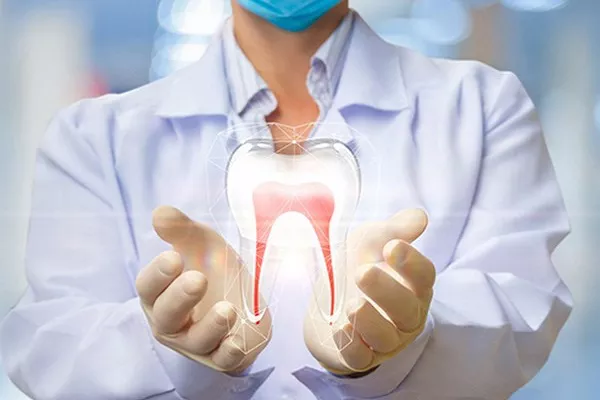In the pursuit of a brighter, more radiant smile, many individuals turn to home remedies and natural solutions for teeth whitening. Among these remedies, baking soda, or sodium bicarbonate, has gained popularity for its purported whitening properties. But does baking soda truly whiten teeth, and is it a safe and effective option for achieving a brighter smile? This article delves into the effectiveness of baking soda for teeth whitening, providing insights into its usage, benefits, drawbacks, comparison with other whitening methods, safety precautions, scientific evidence, alternative options, and the importance of professional dental advice.
Effectiveness of Baking Soda
Baking soda is renowned for its mild abrasive properties, making it a common ingredient in many toothpaste formulations. Its abrasive nature allows it to gently scrub away surface stains on the enamel, contributing to a whiter appearance. While baking soda alone may not produce dramatic whitening results, consistent use over time can help maintain a brighter smile by removing extrinsic stains caused by foods, beverages, and tobacco use.
How to Use Baking Soda
Using baking soda for teeth whitening is simple and straightforward. Here’s how to do it effectively:
Create a Baking Soda Paste: Mix a small amount of baking soda with water to form a paste with a consistency similar to toothpaste. Alternatively, some individuals prefer to mix baking soda with hydrogen peroxide for added whitening power.
Brush Gently: Apply the baking soda paste to your toothbrush and brush your teeth gently in circular motions for about two minutes.
Rinse Thoroughly: Rinse your mouth thoroughly with water to remove any residual baking soda.
It’s important to note that while baking soda can effectively remove surface stains, it may not address deeper, intrinsic discoloration within the tooth structure.
Pros and Cons
Before incorporating baking soda into your oral care routine, consider the following pros and cons:
Pros
Plaque Reduction: Baking soda’s abrasive properties can help remove plaque buildup, reducing the risk of cavities and gum disease.
Affordability: Baking soda is an inexpensive and readily available option for teeth whitening compared to professional treatments or commercial whitening products.
Cons
Lack of Fluoride: Unlike many commercial toothpaste formulations, baking soda does not typically contain fluoride, which is essential for strengthening tooth enamel and preventing cavities.
Enamel Damage: Excessive or abrasive use of baking soda can potentially damage tooth enamel, leading to increased sensitivity and vulnerability to decay.
see also: What Does A Blue Led Light Do For Teeth Whitening
Comparison with Other Whitening Methods
While baking soda may offer a cost-effective and convenient option for teeth whitening, it’s essential to consider how it stacks up against other whitening methods:
Professional Bleaching: Professional whitening treatments performed by dental professionals often yield faster and more noticeable results than baking soda. However, they also come with a higher cost and may involve potential side effects such as tooth sensitivity.
Whitening Toothpaste: Whitening toothpaste formulations contain abrasive agents and additional whitening ingredients to help remove surface stains. While they may offer more gradual whitening results compared to professional treatments, they are generally more effective than baking soda alone.
Safety Precautions
To ensure the safe and effective use of baking soda for teeth whitening, consider the following precautions:
Moderation: Use baking soda in moderation to avoid over-exposure and potential enamel damage. Limit use to a few times per week and monitor for any signs of sensitivity or irritation.
Regular Dental Check-Ups: Maintain regular dental check-ups to assess your oral health and address any concerns related to teeth whitening or enamel erosion.
Scientific Evidence
Numerous studies have investigated the whitening properties of baking soda and its impact on oral health. Research published in the Journal of Clinical Dentistry found that toothpaste containing baking soda demonstrated significant whitening effects compared to non-baking soda formulations. Additionally, a study published in the Journal of the American Dental Association concluded that toothpaste containing baking soda was effective in removing extrinsic tooth stains.
Alternative Options
For those who may not find baking soda effective or appealing, several alternative options are available for natural or over-the-counter teeth whitening. These options include activated charcoal, oil pulling with coconut oil, and over-the-counter whitening strips or gels.
see also: What Does A Blue Led Light Do For Teeth Whitening
Dental Professional Advice
Before embarking on any at-home teeth whitening regimen, it’s crucial to consult with a dental professional. A dentist can evaluate your oral health, assess the cause of tooth discoloration, and recommend the most suitable whitening method based on your individual needs and dental history.
Additionally, professional supervision can help ensure safe and effective whitening results without compromising oral health.
Conclusion
While baking soda may offer some benefits for teeth whitening, it’s essential to approach its use with caution and moderation. Incorporating baking soda into your oral care routine can help remove surface stains and maintain a brighter smile, but it’s not a substitute for professional dental care or comprehensive whitening treatments. By considering the pros and cons, comparing with other whitening methods, taking safety precautions, reviewing scientific evidence, exploring alternative options, and seeking professional advice, you can make informed decisions to achieve a healthier, more radiant smile.
FAQs About Teeth Whitening with Bicarbonate of Soda
1. Is it safe to use bicarbonate of soda on your teeth?
Using bicarbonate of soda (baking soda) on your teeth can be safe if done correctly and in moderation. Baking soda is a mild abrasive that can help remove surface stains from teeth. However, it is important to use it carefully to avoid damaging the enamel. Here are some guidelines:
Moderation: Use baking soda no more than a few times a week to prevent enamel erosion.
Gentle Brushing: Avoid vigorous brushing to reduce the risk of enamel wear.
Consult a Dentist: Before using baking soda regularly, consult with a dentist, especially if you have sensitive teeth or existing dental issues.
2. How to make teeth whiter in 3 minutes with baking soda?
While you can’t achieve significant whitening in just 3 minutes, you can use baking soda to help brighten your teeth slightly in a short period. Here’s a quick method:
Mixing: Combine 1 teaspoon of baking soda with a few drops of water to form a paste.
Application: Apply the paste to your toothbrush and gently brush your teeth for about 2 minutes.
Rinsing: Rinse your mouth thoroughly with water to remove any residue.
Repeat this process 2-3 times a week for best results. However, for more noticeable whitening, you may need to use additional methods or professional treatments.
3. Can I mix bicarbonate of soda with toothpaste?
Yes, you can mix bicarbonate of soda with toothpaste. This combination can enhance the cleaning power of your regular toothpaste while still providing the benefits of fluoride and other ingredients. Here’s how to do it:
Preparation: Put a small amount of toothpaste on your toothbrush.
Adding Baking Soda: Sprinkle a small amount of baking soda on top of the toothpaste.
Brushing: Brush your teeth gently for about 2 minutes.
Rinsing: Rinse your mouth thoroughly with water.
Using this mixture a few times a week can help remove surface stains and maintain oral hygiene.
4. How to whiten teeth quickly?
For fast teeth whitening results, consider the following methods:
Professional Whitening Treatments: In-office treatments like Zoom Whitening or laser whitening can provide noticeable results in one session.
Whitening Strips: Over-the-counter whitening strips can show results within a few days when used as directed.
Whitening Pens: Convenient for quick touch-ups and can produce visible results within a short period.
Baking Soda and Hydrogen Peroxide: Create a paste using baking soda and a small amount of hydrogen peroxide. Brush with this paste for 2 minutes, then rinse thoroughly. Use this method sparingly and consult a dentist before using it regularly.
You Might Be Interested In































